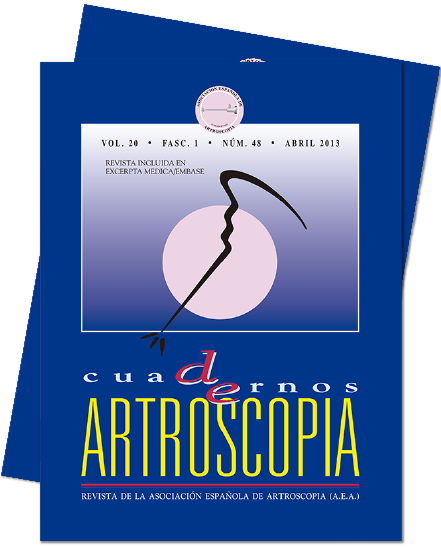Resumen:
Introducción: el SLAP de tipo II es la lesión del labrum superior más frecuentemente identificada tanto en resonancia magnética nuclear como en cirugía artroscópica de hombro. Actualmente existe un consenso de que la porción larga del bíceps se origina tanto en el tubérculo supraglenoideo como en la porción superior del labrum, en una proporción aproximada del 50%-50%.
Objetivos: determinar si existe una brecha normal de forma fisiológica en la evolución del feto entre el labrum superior y el borde superior de la glena, y determinar cuál es el origen de la porción larga del bíceps braquial en fetos humanos durante su desarrollo el segundo trimestre. Materiales y métodos: Estudio histológico de 8 fetos entre las semanas 11 y 20, tanto en el plano coronal (frontal) como sagital (lateral).
Resultados: no se observó evidencia histológica de una brecha entre el borde superior de la glenoides y el labrum superior en ninguno de los cortes histológicos, y la porción larga del bíceps se originó en el labrum superior en todos los especímenes estudiados.
Conclusiones: el labrum superior se encuentra firmemente unido al anclaje superior de la glenoides, sin evidencia de brecha entre ambas estructuras. La porción larga del bíceps braquial se origina en el labrum superior.
Abstract:
Introduction: type II SLAP is the upper labrum lesion most frequently identified both in MR imaging of the shoulder and in shoulder arthroscopic surgery. There is at present consensus that the long portion of the M. biceps brachialis may originate both in the supraglenoid tubercle and in the upper aspect of the labrum, in an approximate 50%-50% proportion.
Aims: to ascertain whether a normal, physiological breach exists in foetal development between the upper labrum and the upper aspect of the glena and to ascertain which is the point of origin of the long portion of the M. biceps brachialis in the human foetus during its development along the second gestational trimester. Material and methods: Histologic study of eight 11-20 week-old foetuses both in the coronal (frontal) and in the sagittal (lateral) planes.
Results: there was no histologic evidence of a breach between the upper edge of the glena and the upper labrum in any of the histologic sections, and the long portion of the M. biceps brachialis originated in the upper labrum in all the specimens studied.
Conclusions: the upper labrum is firmly joined to the upper anchorage of the glenoid surface, with no evidence whatsoever of any breach between the two structures. The long portion of the M. biceps brachialis originates from the upper labrum.




